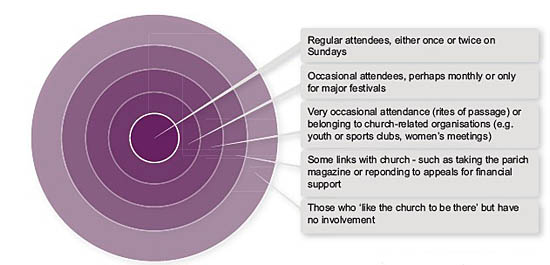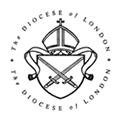History, mission and ministry
Reflecting on mission
Building on History has aimed to show that history can provide significant insights on mission. Knowledge of history can allow leaders to develop realistic and informed ambitions; boost morale; and rovide models from the past for consideration.
Decline and growth
In recent years academic research has increasingly challenged the idea that the history of the churches in Britain is a simple story of strength followed by decline.
Assumptions about church decline have often assumed a starting point of a previous religious ‘golden age’. However, the reality is that churchgoing was never close to universal in the nineteenth century. Church planting in this period, despite its many successes, often lacked a strategic rationale, being driven by motives such as party conflict or the interests of landowners and property developers. Too many Anglican churches were built during this period – which may have contributed to ongoing problems, such as financial pressures, thinly-spread congregations and over-stretched clergy. The idea of a past ‘golden age’ can increase the perception amongst contemporary clergy that they are ‘failing’.
On the other hand, historians have also questioned the widely accepted idea of linear secularisation. While, of course, outward signs of Christian practice have declined considerably in the twentieth century, there is also considerable evidence for variation and fluctuation. Historically, in the modern period some churches have always been able to buck wider trends - and leadership and agency have been important factors in the success or failure of individual churches.
Engaging with the parish
Clergy often find that their parishioners have different levels of ‘commitment’ to church, with attendance varying from the regular, via the sporadic to ‘special occasions only’. Recent academic research on the relationship between church and parishioner suggests that historically churches have experienced similar variations and have sought to recognise opportunities for engagement on different levels and through different channels.
- Research by Sarah Williams on nineteenth-century ‘popular religion’ has shown the importance of ‘occasional conformity’ through rites of passage and New Year services. In urban contexts there was a dynamic and vibrant belief system based around these practices, where popular ‘folk’ belief could combine powerfully with Christian ideals and reaffirmation of personal faith. Those who attended on this basis had a surprisingly strong sense of loyalty to the church and clergy, often regarding both as ‘theirs’. Here, history suggests that the church’s ‘lifecycle’ role is far from insignificant, and that even unconventional church going can have deep meaning for members of the local community.
- Other studies, particularly work by Jeffrey Cox, indicate that during the Victorian and Edwardian period the most ‘successful’ churches were those most integrated with the parish. For many, ‘church work’ was day-to-day engagement with the community through welfare provision, thrift and saving societies, medical services and education. Such links could encourage high overall church attendance. Charles Booth’s contemporary investigation records that at St John’s, Isle of Dogs, in 1897, while attendances were 250-300 in the morning and 400 in the evening, it was estimated that some 2,000 in the parish occasionally attended church.
- The late Rex Walford’s research on interwar church planting in London’s suburbia has suggested a model of concentric circles for understanding engagement with church life (below). The provision of rites of passage, church-related organisations and parish magazines are identified as important ways of maintaining links with the parish.

Rex Walford's model of church engagement
What to do next?
The Building on History project is informing new research and also aims to promote relevant existing academic research. In
particular, look out for the following reading material:
- John Wolffe and Bob Jackson, ‘Anglican Resurgence: the Church of England in London’ in David Goodhew, Church Growth in Britain, 1980 to the Present Day (Ashgate, forthcoming, June 2012).
- Forthcoming research on financial giving towards mission activities in London in the late nineteenth century. A PhD, which is linked with the Building on History project, is currently being completed by Sarah Flew at The Open University.
- For existing research relating to mission and ministry see Sarah Williams, Religious Belief and Popular Culture in Southwark, c. 1880-1939 (Oxford, 1999); Jeffrey Cox, The English Churches in a Secular Society: Lambeth, 1870-1930 (Oxford, 1982); Rex Walford, The growth of New London in suburban Middlesex (1918–1945) and the response of the Church of England (Lampeter, 2007).
Go to:





